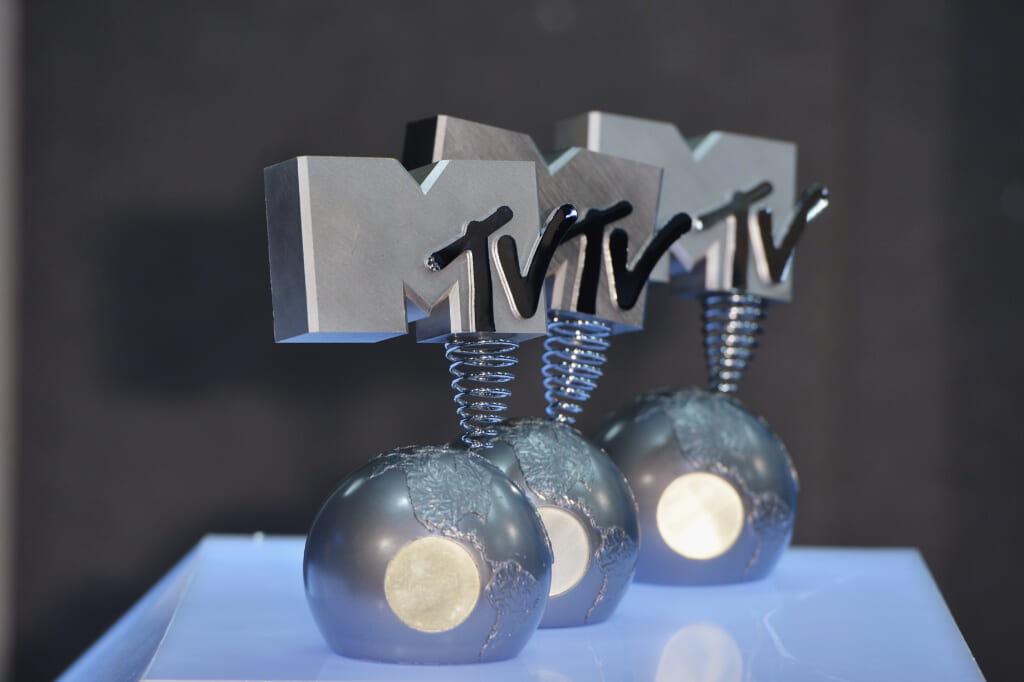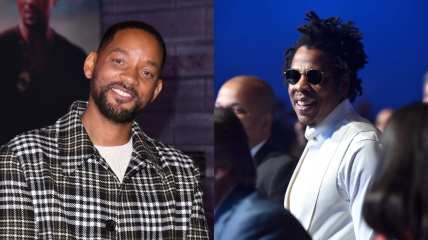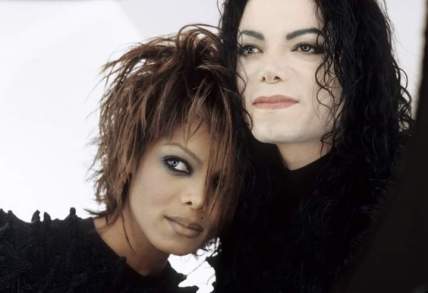The top 10 best Black artists of the MTV era
As MTV celebrates 40 years, theGrio is highlighting the Black artists who forged the trail for innovation in the music video medium.
On Aug. 1, 1981, a new cultural and artistic revolution commenced with the introduction of the Music Television network, otherwise known as MTV.
The concept of a 24-hour channel devoted to videos from artists and bands would come to dominate and inform music promotion, recording, and consumers in ways even the network itself couldn’t have predicted.
However, the channel refused to play videos by Black artists at first. And it’s safe to say that had it not been for the innovative ideas and execution of the medium from Black musicians, MTV may have died on the vine long before reaching middle age.

The irony, and poetic justice, of MTV’s racist practices early on was turned on its ear when African-Americans became the face of so many of their flagship programs; Sean ‘Diddy’ Combs helped combine their long time medium with their current reality show programming with Making The Band; LL Cool J legitimized their MTV Unplugged series for years to come; Lisa “Left Eye” Lopes hosting their music competition showcase, The Cut a precursor to shows like American Idol and The Voice.
To celebrate MTV’s 40th anniversary, theGrio is highlighting 10 Black artists who elevated the art form of the music video.
Michael Jackson
Michael Jackson is simply the GOAT when it comes to this medium, and it’s actually not close. The second Black artist to ever be played on the network, (Prince was officially the first despite what is widely believed, more on that later) had it not been for his vision and foresight for the potential of how the medium could be an extension of artistic expression, there would be no reason to compose this article. He was so dedicated to advancing the quality of music videos that he dubbed all his videos “short films,” giving their visuals the grandeur and respectability to be taken seriously. If you don’t already know them, Google the videos for “Billie Jean,” “Beat It,” “Thriller,” “Smooth Criminal,” “Black or White,” “Remember the Time” and “Scream.” They are among the very best of all time.
First Video
Last Video
Best Video
Janet Jackson
While it would be easy to say that Janet Jackson picked up some video-making lessons from her big brother, the truth is that Damita Jo forged her own identity and became the template for two generations of female R&B and pop stars. The B/W takes on videos like, “Let’s Wait Awhile,” and, “Miss You Much,” were ways that Jackson established a classy, dramatic flavor.
“If” and “That’s The Way Love Goes” find Janet getting down to earth while embracing her sexuality. On “Together Again,” “Got Til It’s Gone,” “Runaway” and “Made For Now,” Janet embraces worldly influences while celebrating the wide-ranging African diaspora.
First Video
Last Video
Best Video
Kanye West
“The only rapper compared to Michael,” he once rhymed, Kanye West used MJ for inspiration, elevating not just the hip-hop video, but an entire genre. From day one, West put rap and hip hop on a pedestal utilizing his visual presentation as a way to make it not only the most popular genre but the most artistic. Whether making three versions of “Jesus Walks,” hiring Spike Jonze to helm the murderous “Flashing Lights” or collaborating with Hype Williams for the 30-minute masterstroke “Runaway,” West deserves respect for keeping the bar high for musical short films in hip-hop.
First Video
Last Video
Best Video
Missy Elliott
One of the most important keys to longevity is reinvention, and Missy Elliott is arguably the greatest example of that ideal. Her short films drew from the rich lineage of Afrofuturism practiced by Black legends like Sun Ra, George Clinton and Afrika Bambaataa, and would inform her disciples like Erykah Badu and Janelle Monae. From the very first visual of Elliott wearing a giant garbage bag in “The Rain,” to taking on the persona of Mega Man in “Sock It To Me,” to the stark, ominous mood of “She’s a B—h,” Elliott has kept the music video creatives on their heels. Special effects, dancing kids, living hairdos, nothing is off-limits to Ms. Misdemeanor, and the world owes her a huge debt.
First Video
Last Video
Best Video
Prince
Perhaps the most comprehensive artist of the 20th century, Prince Rogers Nelson was as prolific a music video creative as he was a songwriter. While Jackson gets, and deserves, a majority of the credit for breaking down the doors that MTV was trying to keep shut to Black artists, Prince’s “1999” and “Little Red Corvette” may have cracked the door open in the first place as they preceded Jackson’s debut on the channel in 1982. Since that time, videos from his Purple Rain era and beyond dominated the channel, as the multi-instrumentalist’s androgynous artistry and persona in videos like “Kiss,” “Thieves in the Temple” and “Gett Off” was in full view to Black communities and middle America alike.
First Video
Last Video
Best Video
Beyoncé
Queen Bey earned her place on top of the music mountain by not only being one of the most talented, relentless performers of the last 20 years, but reinventing the concept of the visual album. While she didn’t invent the concept, Beyoncé’s commitment to providing a video for each song on her albums after 2013’s Beyoncé separated her from her peers. From the backward storytelling of “Me, Myself & I,” the gender role reversal of “If I Were a Boy” to the expansive, complex narratives of Lemonade and Lion King: The Gift, Mrs. Knowles-Carter has made the compilation of videos on each album into feature-length events for a new generation.
First Video
Last Video
Best Video
Busta Rhymes
Maybe the most animated MC of all time, Busta Rhymes matched his vivid, three-dimensional wordplay and metaphors with visuals that were equally compelling and imaginative. Armed with the innovative eye of directors like the aforementioned Williams, and driven by a friendly three-way rivalry between himself, Elliott and Combs, Busta combined illustrious colors and effects with a relatable sense of humor on visuals like “Dangerous,” “Put Your Hands Where My Eyes Can See,” Gimme Some More” and “Break Ya Neck.”
First Video
Last Video
Best Video
Outkast
Big Boi and Andre 3000 declared that the South had something to say after they burst onto the scene in 1994. Little did the world know that the South also had something to show as well. At first visuals for “Players Ball” and “Southernplayalisticadillacmuzik” offered the world a glimpse into Atlanta’s neighborhoods and culture. But soon, as their respective personalities began to evolve, the eccentricities of the duo made videos like “Ms. Jackson,” “B.O.B.” and “Roses” a colorful look into two unique rap geniuses.
First Video
Last Video
Best Video
Kendrick Lamar
One of the elements that have made Kendrick Lamar the top rapper in the world today is his attention to detail. The same microscopic, idiosyncratic ingredient that he puts into his conceptual albums, like good kid, m.A.A.d. City and To Pimp a Butterfly, he puts into the accompanying visuals. His long-form music film “God Is Gangsta” expertly used songs “u” and “For Sale?” as expressive illustrations of the depression that plagued Lamar in the aftermath of his mainstream fame. In his career so far, videos for “Swimming Pools (Drank),” “i,” “Alright” and “Humble” have raised the bar for short films in rap music today.
First Video
Last Video
Best Video
Childish Gambino
As music videos began being cheaper, simpler and less important to artist promotion as music networks like MTV and VH1 evolved into showcases for reality TV, Donald Glover decided to take his unique insight as a writer and actor and apply it to his music videos. His abstract, progressive storytelling with videos for “Bonfire,” “3005” and “Sober” had the intricacies of an elaborate independent film. The allegorical, political statement of Grammy-winning “This Is America” may be the most important music video of the early 21st century.
First Video
Last Video
Best Video
Have you subscribed to theGrio’s new podcast “Dear Culture”? Download our newest episodes now!
TheGrio is now on Apple TV, Amazon Fire, and Roku. Download theGrio today!


